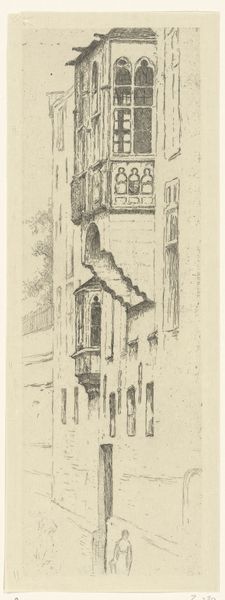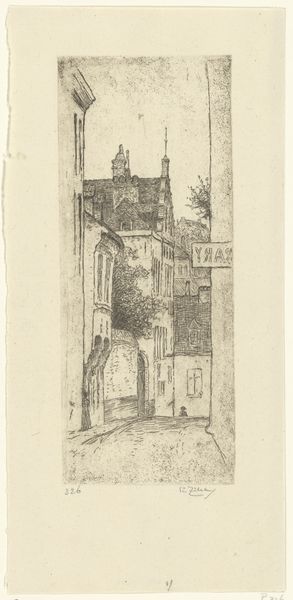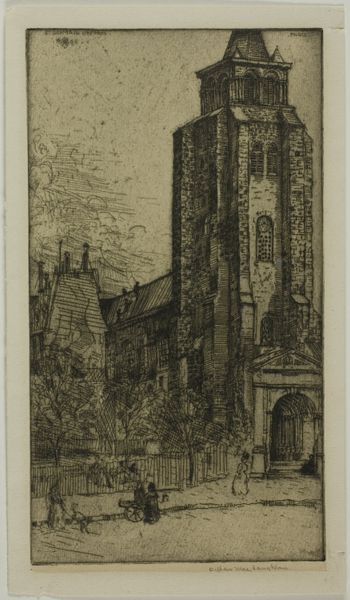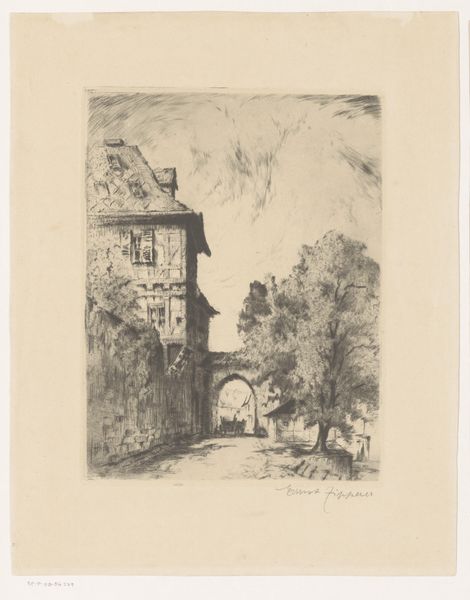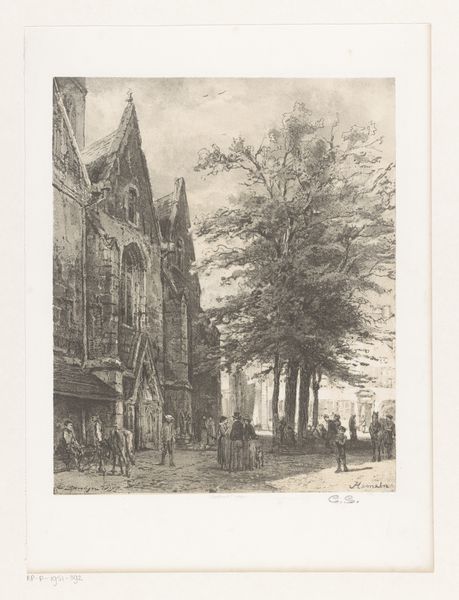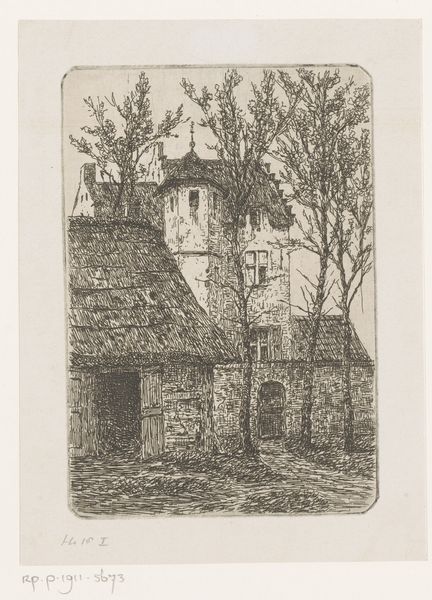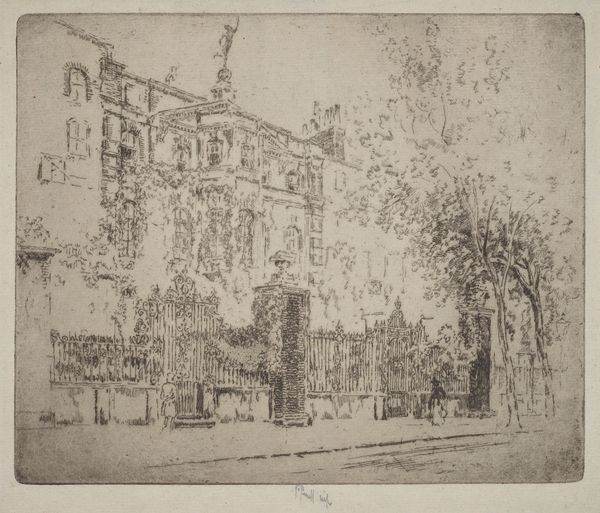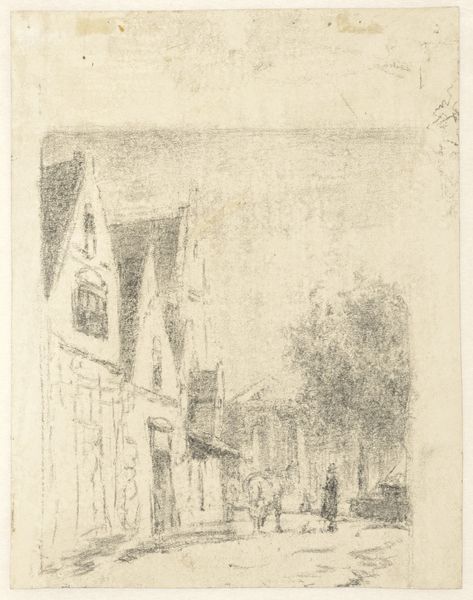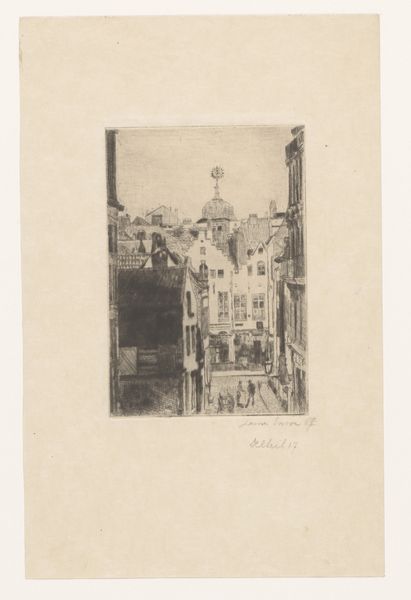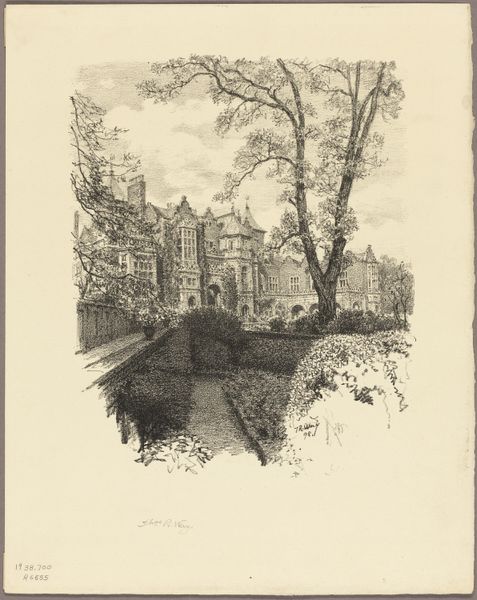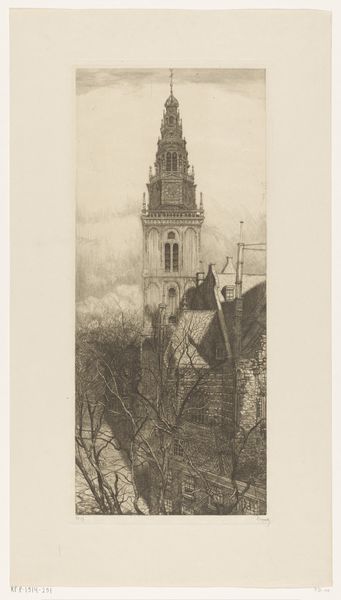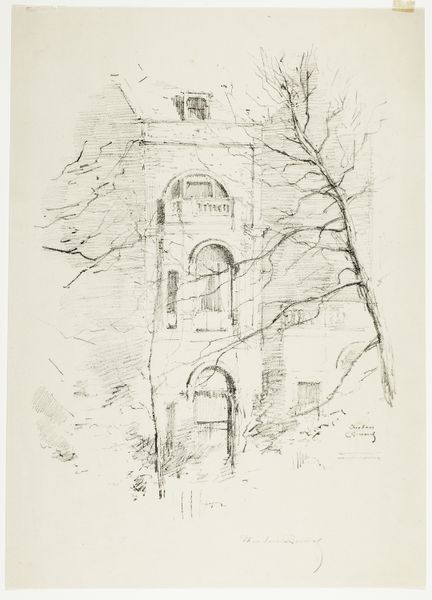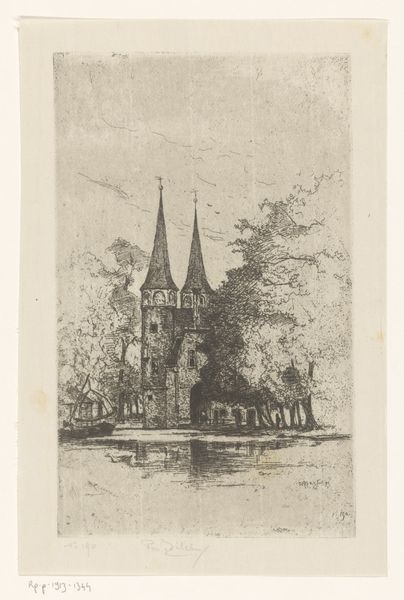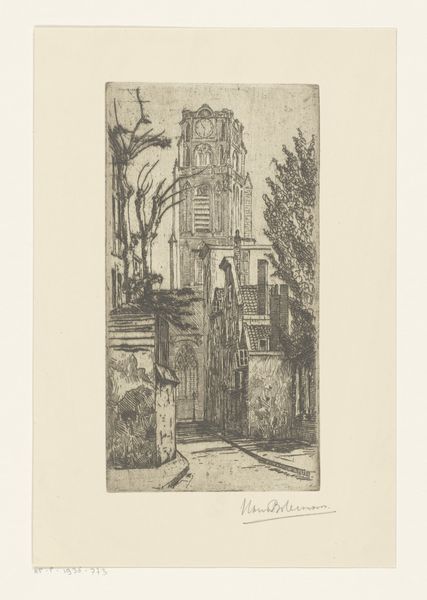
drawing, ink, pencil
#
pen and ink
#
drawing
#
pen drawing
#
pen sketch
#
landscape
#
etching
#
ink
#
pencil
#
cityscape
#
realism
Dimensions: height 274 mm, width 186 mm
Copyright: Rijks Museum: Open Domain
Curator: Looking at Otto Hanrath’s "Kerkplein, Alkmaar" from 1923, executed in pen and ink, I’m immediately drawn to the layered, almost dreamlike quality of the image. The building feels both present and receding into memory. Editor: Yes, there's a strong sense of nostalgia conveyed. The composition, with its looming cathedral shrouded by trees, almost feels like a commentary on the enduring power of faith and historical architecture in the face of the ephemeral nature of the modern world. How might this urban landscape resonate politically in interwar Europe? Curator: Hanrath’s choice of medium – pen and ink – is interesting in itself. Think of the traditions associated with drawing, especially the use of sketching. Editor: I do appreciate how he uses the contrast to great effect. It also reminds me of the use of light and shadow we see with sacred iconography – especially around images of the Virgin in urban settings. Curator: The viewpoint, slightly obscured, speaks to broader artistic and social currents of that time, movements searching for stability and grappling with modernity's impact. Is he consciously or unconsciously representing how a society tries to preserve identity through physical spaces? Editor: It raises questions about permanence versus change, about how our relationship with shared spaces can evolve and carry deeper symbolic meaning through various sociopolitical and psychological readings. What strikes you most profoundly about it, as you reflect further? Curator: I think I see in this work an appeal to tradition. What are the different meanings attributed to cities at the time? This drawing helps reveal them in new light, a different understanding that history would otherwise erase. Editor: For me, it's how Hanrath uses familiar visual cues, the architectural and natural motifs, to elicit deeply felt responses related to place, history, and communal identity – it almost acts as a container of collective memory, if that makes sense.
Comments
No comments
Be the first to comment and join the conversation on the ultimate creative platform.
